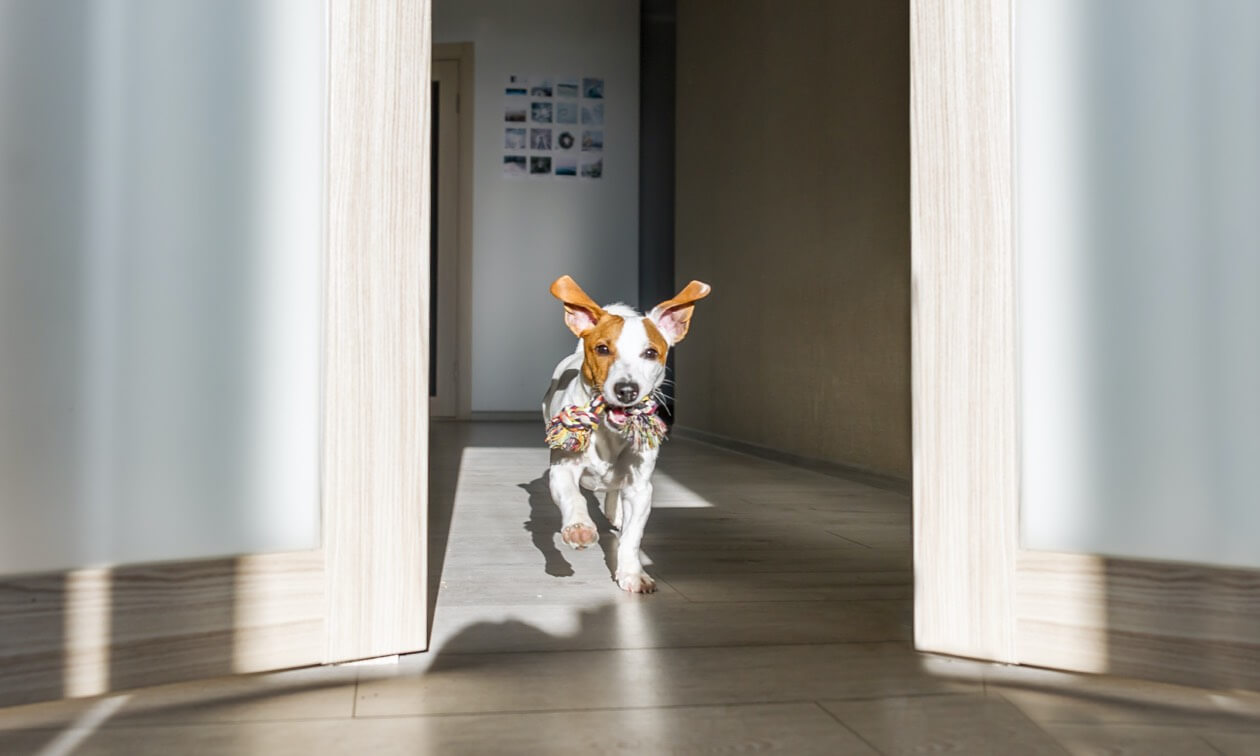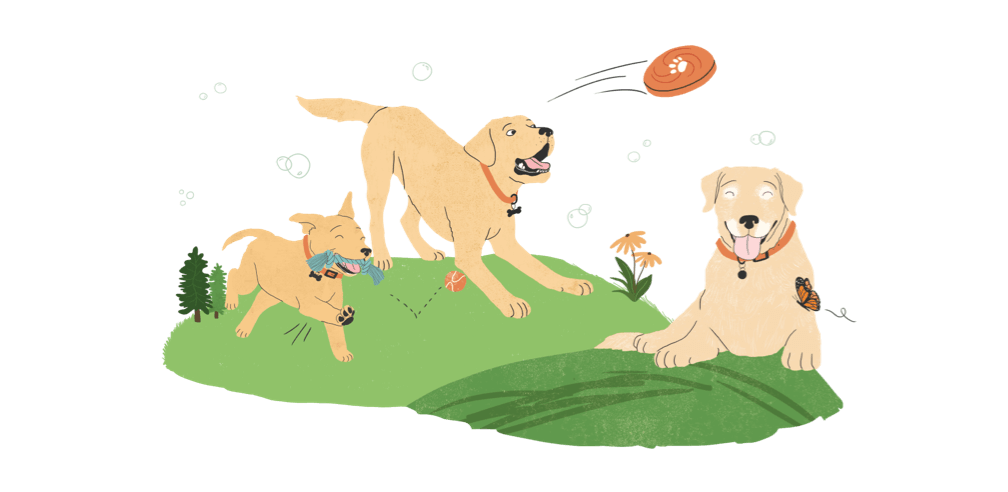You might call them “zoomies”, “the crazies”, or “Look out, the dog has lost his mind!” Whatever you call them, just about every dog has those moments where they go bananas and fly around the house. Is it a good thing or something to worry about? Should you encourage or discourage the zoomies? What is your dog trying to communicate with this wacky behavior?
What Are the Dog Zoomies?
You may be surprised to know there’s a technical term for the dog zoomies. They’re called FRAPs — frenetic random activity periods. While most of the time this behavior seems to come out of nowhere, some dogs are more predictable as to when they’ll get the zoomies. You may notice that your dog does this after they get a bath, finish their business in the yard, or when they get a new toy.
Zoomies usually look something like this — your dog suddenly, and often without warning, seems to lose their mind. They’ll often tuck their tail, their eyes get wide, and they start flying around the home or outside. Sometimes it’s small circles at seemingly warp speed, and other times they zoom from one room to the next or up and down the hallway. If you have more than one dog, they may all join in. It’s crazy town for a minute or two, and then they flop down with exhaustion, pant, and try to catch their breath with a very content look on their face.
Is it Normal for Dogs to Get the Zoomies?
Absolutely! It’s completely normal and natural behavior. Dogs aren’t the only animals to zoom — cats are famous for it, too. You’ll even see it in horses, rabbits, and other critters when they get excited and those endorphins kick in.

Why Dogs Get the Zoomies
There are a variety of reasons your dog may suddenly start zooming around:
Excess Energy
If your dog has been cooped up all day or isn’t getting regular exercise, they may have a burst of pent-up energy that explodes into a zoomie session.
Playtime Excitement
A good play session with you or a play date with a canine friend can help stave off the zoomies, but these super-fun activities can also bring them on.
Humans Coming Home
Some dogs are overwhelmed with excitement when their people get home. Even just returning from a quick trip to the store can cause a zoomies party.
Bath Time
It’s very common for dogs to get zoomies after a bath. They may be excited after sitting patiently (you hope) during their bath or relieving any stress they experienced during bath time.
Stress/Anxiety
In some cases, zoomies can be a way for your dog to process intense feelings of stress.
When to Worry About Your Dog’s Zoomies
Occasionally, dog zoomies can be an indication of stress. It could be that your dog is exhibiting displacement behavior (this means they’re in a heightened state of arousal and are unsure what to do). They displace that feeling of uncertainty with the zoomies. It doesn’t have to be a bad thing. Excitement at a new dog park can be overwhelming and cause a “what do I do first?” reaction that leads to the zoomies. It’s also possible your dog is having a negative experience — maybe they have separation anxiety, or they’re nervous around children and not sure how to react in those situations, so they zoom.
Keep an eye on your dog’s zoomies. If you’re worried they may be stress-related, try to identify the trigger. Next time they’re exposed to it, see if you can reduce the intensity of that trigger, provide lots of rewards, and even consider keeping your dog focused on something else like a play session or food puzzle.
It’s also important to consider that regular zoomies could mean your dog needs more exercise and mental enrichment. Zoomies should be a fun burst of energy, not their primary source of activity.
Should I Try to Control My Dog’s Zoomies?
That depends on the situation. If you’re sure those zoomies aren’t stress-related and your dog isn’t at risk of hurting themself, anyone else, or breaking things, let them have some fun. No need to intervene.
There are some situations where zoomies are a bad idea — in someone else’s home, near kids or physically-compromised adults, in an uncontrolled area where they could be injured, or in places where they could upset other people and pets or break things. In these cases, don’t punish your dog. They’re just doing what comes naturally and won’t understand why you’re upset.
Instead, have a toy handy and focus their attention back to you. You can keep their attention and acceptably work off that excited energy until they’re ready to calm down and remember to reward that calm behavior as it’s happening as well. Showing them good things happen when they’re relaxed in these types of situations will make them more likely to relax next time.
ZPC-01957R1



